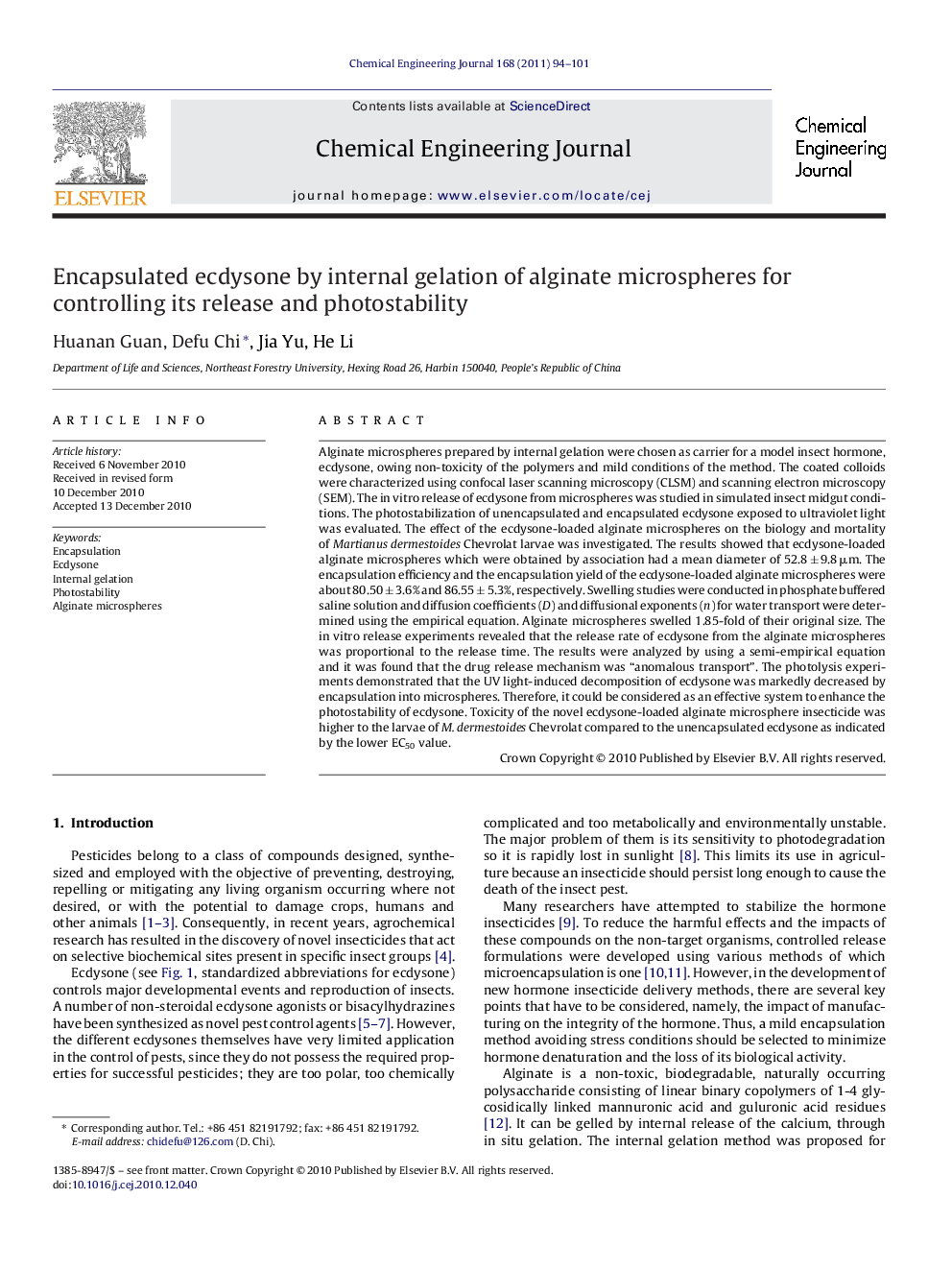| Article ID | Journal | Published Year | Pages | File Type |
|---|---|---|---|---|
| 151408 | Chemical Engineering Journal | 2011 | 8 Pages |
Alginate microspheres prepared by internal gelation were chosen as carrier for a model insect hormone, ecdysone, owing non-toxicity of the polymers and mild conditions of the method. The coated colloids were characterized using confocal laser scanning microscopy (CLSM) and scanning electron microscopy (SEM). The in vitro release of ecdysone from microspheres was studied in simulated insect midgut conditions. The photostabilization of unencapsulated and encapsulated ecdysone exposed to ultraviolet light was evaluated. The effect of the ecdysone-loaded alginate microspheres on the biology and mortality of Martianus dermestoides Chevrolat larvae was investigated. The results showed that ecdysone-loaded alginate microspheres which were obtained by association had a mean diameter of 52.8 ± 9.8 μm. The encapsulation efficiency and the encapsulation yield of the ecdysone-loaded alginate microspheres were about 80.50 ± 3.6% and 86.55 ± 5.3%, respectively. Swelling studies were conducted in phosphate buffered saline solution and diffusion coefficients (D) and diffusional exponents (n) for water transport were determined using the empirical equation. Alginate microspheres swelled 1.85-fold of their original size. The in vitro release experiments revealed that the release rate of ecdysone from the alginate microspheres was proportional to the release time. The results were analyzed by using a semi-empirical equation and it was found that the drug release mechanism was “anomalous transport”. The photolysis experiments demonstrated that the UV light-induced decomposition of ecdysone was markedly decreased by encapsulation into microspheres. Therefore, it could be considered as an effective system to enhance the photostability of ecdysone. Toxicity of the novel ecdysone-loaded alginate microsphere insecticide was higher to the larvae of M. dermestoides Chevrolat compared to the unencapsulated ecdysone as indicated by the lower EC50 value.
